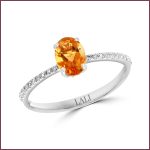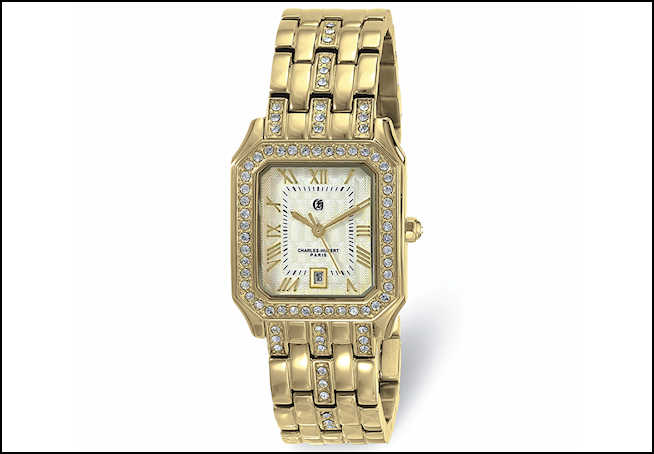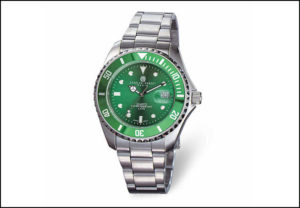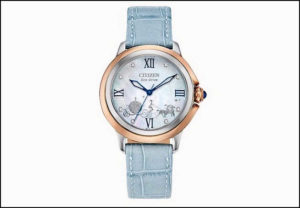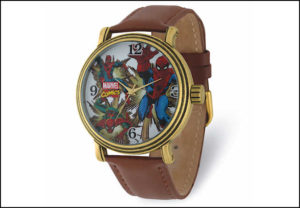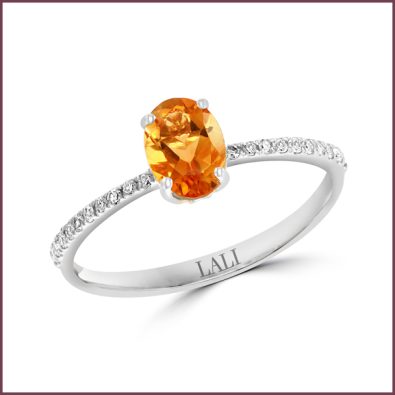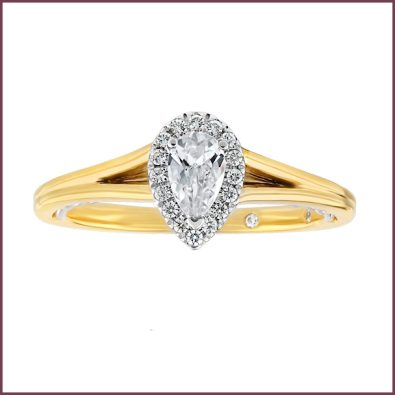Watches Expected to Grow Significantly Over Next 5 Years
Maybe it’s a sign of the times, but people are more into clocks and watches than ever.
The size of the global wristwatch market is growing at a good pace with substantial growth rates the past few years expected to continue through 2027, according to a study by Market Research Intellect (MRI).
The global market for watches is valued at $53.7 billion in 2020, and is expected to reach $82.2 billion by the end of 2026, growing at a CAGR of 6.2% the next five years, MRI forecasts. In the United States, the market for watches and clocks was estimated at over $12 billion in 2020, cites research by ReportLinker.
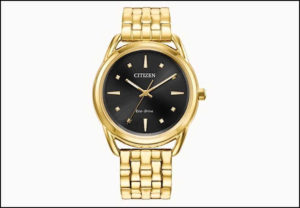 Maybe it’s a sign of the times, but people are more into clocks and watches than ever, the eighth annual Pinterest Predicts says of its “hot horology” trend. “Oversized clocks as decor, old-school watch bracelets, and luxury men’s watches will define 2022 style, particularly for Gen X and Boomers.” And some thought watches would die off once smart phones came along!
Maybe it’s a sign of the times, but people are more into clocks and watches than ever, the eighth annual Pinterest Predicts says of its “hot horology” trend. “Oversized clocks as decor, old-school watch bracelets, and luxury men’s watches will define 2022 style, particularly for Gen X and Boomers.” And some thought watches would die off once smart phones came along!
Watches will be the new “must have accessory” this year, luxury marketer Laetitia Hirschy, founder of Kaaviar PR and co-founder of Watch Femme, a female-centric community of watch aficionadas, told the Robb Report in January. “Appreciation of fine watchmaking will start to move further away from a niche luxury interest and transition into the mainstream. Fueled by growing demand from a more diverse population, the industry will increasingly adopt inclusive messaging across demographics [like] gender, age and culture.”
Asher Rapkin, co-founder of Collective Horology, a community of watch enthusiasts who collaborate with brands, also told the Robb Report to expect a renaissance in the watch industry, both from a creative and business standpoint. “This year has the opportunity to greatly increase the diversity of collectors and watches in circulation, growing the community and encouraging innovation across the board.”
Part of this boom has been the growing number of women and younger men getting into watch collecting, particularly since COVID, as brands had no choice but to adapt, create better e-commerce sites, and talk directly to their customers.
“In the last three years, I started seeing men in their 30s get into watch collecting, and since the start of COVID, it’s become way more mainstream,” the luxury watch dealer Zoe Abelson recently told the lifestyle platform, The Zoe Report. “The biggest, most exciting change to hit the industry is the staggering number of women who are now avid watch collectors.” Abelson, who created a WhatsApp group for female watch enthusiasts, says that social media, especially Instagram, has had a huge influence on opening up this very traditional industry.
A report on the booming luxury watch market in Refinery29 February, finds women opting for timepieces rather than designer handbags, noting that with limited inventory of luxury watches — as a result of limited production, made worse by the pandemic’s impact on the supply chain — many are shopping for secondhand pieces rather than buying them new.
Sustainable Watch Focus
Sustainability is a focus of all industries, and watches are no exception. Longtime watch writer founder of the blog watchdetail.com, Carol Besler, says the next generation of watch buyers are environmentally conscious and are looking for watches that reduce the world’s carbon footprint.
She points to Citizen Watch’s battery-less, solar-powered Eco-Drive technology as a great example. Launched in 1976, Citizen was ahead of its time with eco-mindfulness at its core, something the brand is celebrating and advocating in its Purposeful Power campaign that calls attention to solar energy for the future.
“Grounded in the Japanese notion that elevates society above self, Citizen takes a forward-thinking, socially responsible and inclusive world view,” the watchmaker said in a statement. Referencing its tagline, “Better Starts Now,” it says creating better products, customer experiences and a better planet are all part of its corporate philosophy.
Sustainability considerations are also bringing consumers to increasingly look at pre-owned watches, Elizabeth Layne, CMO at luxury resale platform Rebag, recently told Refinery29.
Cora Lee Colaizzi, director of marketing and catalogs and senior merchandiser for Quality Gold — which offers a narrow assortment of Rolex Pre-owned Independently Certified, and Cartier Certified Pre-owned watches — reports that in the past two years, demand has been super high, and supply is low, with some models being temporarily unavailable. “Stock replenishment time frames are longer and longer for popular models, and prices reflect the increased demand.”
Alexander Thiel, a partner at the research firm McKinsey & Co., with expertise in retail, fashion and luxury, shared in a recent podcast that pre-owned watches started to boom the moment that platforms operating in the space professionalized the market.
Thiel advocates luxury watch brands make the pre-owned market work for them, because in the near future, McKinsey forecasts the majority of transactions in the luxury watch space will be resale. “For brands not to participate in this market would mean not participating in a significant part of the value creation.”
